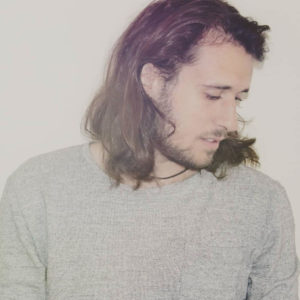Artist Series, News & Press, Uganda
Episode 3 – Richard Smithson: Patience
 About Richard Smithson
About Richard Smithson
I’m a composer and sound designer for theatre, dance and visual media based in Manchester. I work with award winning theatre directors and compose music for media, where my music has been used in 1000s of productions worldwide. I actually graduated from the music production course at Uclan in 2012, and heard about GSM when I was living in Lancaster.
Could you describe your aims and intentions at the beginning of this project?
I wanted to make a piece of music that would be great for synchronisation to media whilst also being true to my own creativity. Something that could be used in a documentary/TV prgram but would also be (hopefully) great for personal listening.
How would you describe your working processes?
A mixture of deliberate and automous creation. Sometimes I have a very clear vision of what I want to create and I do it. Sometimes it goes somewhere completely different. Or you can start the other way with no idea, but something comes out through playing and exploring. So it can be quiet a mix of approaches!
Though I think when you are writing narratively, it’s a little different, you do really need to be clear of who is in charge, and that is always the story.
What daw(s) do you use?
Ableton Live 9 primarily. But I also use Studio One 3 sometimes.
How did you find using the GSM samplers?
Straightforward and easy to use. Simple UI, what you see is what you get! It could be good to get some different articulations though. Maybe using bows on some of the instruments… things like that.
How did you integrate the gsm instruments into your music?
I really like layering them with other sounds. In ‘Patience’ I layered the Adungu instrument with a piano to create that lead line. The pluck sound from the GSM instrument brought a lovely shiny transient to the front of the texture and also helped keep it in the organic sound world I wanted to create. It’s not super audible but it’s those little details that help fill the space.
Is there any particular instrument or sampler that you favoured over the others?
I really like the Adungu instrument. I’ve got it in another production I’m working on at the moment, layering it with a piano again! It’s got a sort of harp like quality using it this way, but with more top end and a stronger transient. When you use the sustain pedal with it, you get all these lovely harmonics working together. What I like as well are the little bits of noise… that really helps it feel intimate and real. Those are the libraries that attract me most.
What are your plans for the future?
Pretty much continue with what I’m doing, composing for media, building up a library of great music. Long term plan, I would like to score some films and or TV dramas one day. I also considered creating a sample library company as I have created a few instruments, but I think that is for further down the road. It would probably focus more on the experimental/sound design side of music as I really love processing and sampling recorded sounds. As a recording artist I feel like there are things I would like to say and do that I haven’t yet, but I’m sure that will come at some point.
Follow Richard Smith to stay up to date with more of his work.



